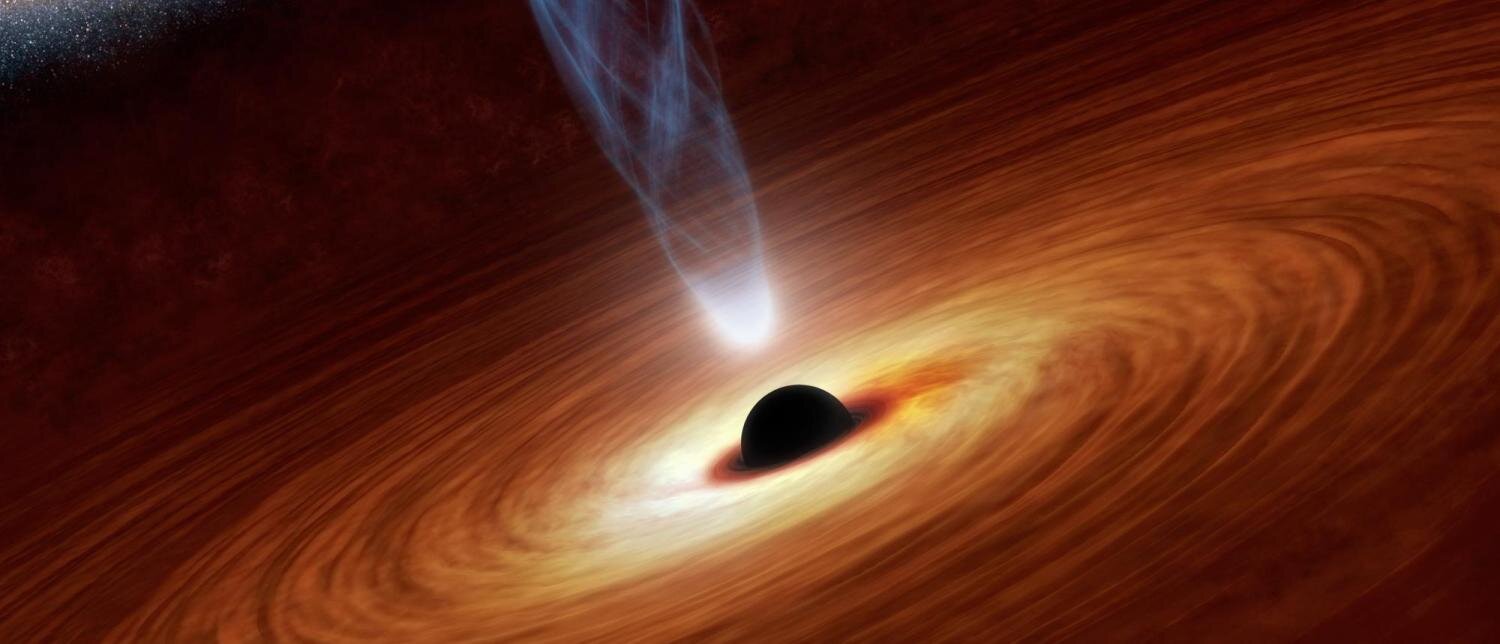Artificial intelligence reveals a key element in the growth of black holes
Published by Adrien,
Source: Monthly Notices of the Royal Astronomical Society
Other Languages: FR, DE, ES, PT
Source: Monthly Notices of the Royal Astronomical Society
Other Languages: FR, DE, ES, PT
Follow us on Google News (click on ☆)
Supermassive black holes, located at the center of all large galaxies, play a crucial role in their evolution. Contrary to popular belief, their growth does not solely depend on the merging of galaxies. Research conducted by the University of Bath, and published in the journal Monthly Notices of the Royal Astronomical Society, demonstrates that the presence of a reservoir of cold gas at the center of the host galaxy is also necessary to fuel these cosmic giants.

Illustration of a growing supermassive black hole, emitting a jet of energetic particles.
Credit: NASA/JPL-Caltech
This study, the first of its kind to use machine learning to classify galaxy mergers, has enabled a better understanding of the relationship between these mergers, the accretion of supermassive black holes (the process by which they draw in and accumulate matter), and star formation. Mathilda Avirett-Mackenzie, a Ph.D. student in the Department of Physics at the University of Bath, highlights the advantage of this approach, allowing for a more accurate reading of galactic activities, free from the human biases often present in traditional classifications.
To arrive at these conclusions, the researchers trained an artificial neural network on simulations of galaxy mergers, then applied this model to observed galaxies in the Universe. This process revealed that galaxy mergers are not strongly associated with the growth of supermassive black holes. Indeed, merger signatures are just as common in galaxies with or without accreting black holes.
The study, which analyzed a sample of nearly 8,000 accreting black hole systems, indicates that mergers lead to black hole growth only in a specific type of galaxies: those undergoing star formation containing significant amounts of cold gas. This result highlights the importance of cold gas, not only for star formation but also for the growth of supermassive black holes.
This discovery opens new perspectives for understanding galaxy evolution and the role of supermassive black holes. By using machine learning, researchers were able to overcome the limitations of human visual classifications, often prone to errors, and obtain consistent results on large samples of galaxies. This innovative approach promises to enrich our understanding of the Universe and its most mysterious mechanisms.